(46252 products available)

































































































































































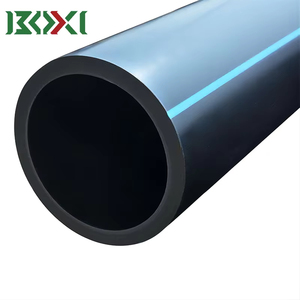
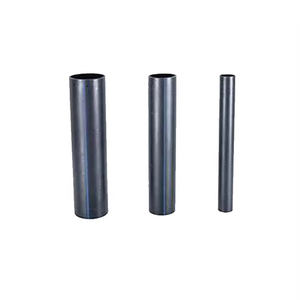
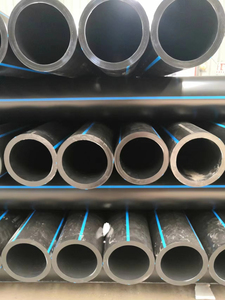
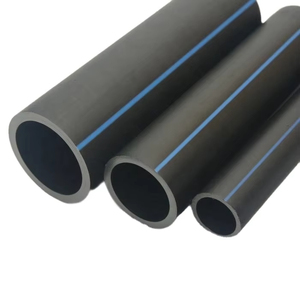
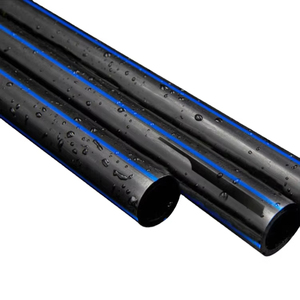
























An HDPE tube is a tube made of high-density polyethylene, a versatile thermoplastic material. These tubes are used in various applications because they are lightweight, durable, and have good chemical resistance. Below are some common types of HDPE tubes:
HDPE Plastic Welding Rods:
HDPE plastic welding rods are used in the plastic welding of HDPE materials. They are ideal for welding tanks, containers, and other HDPE products. The welding rods come in different diameters, such as 3mm, 4.5mm, and 6mm, and different colors, including black, yellow, blue, and natural.
HDPE Blanking Plugs:
HDPE blanking plugs are used to close off pipe ends in various applications. They are resistant to impact, corrosion, and UV rays and are easy to install. These blanking plugs come in different sizes ranging from 20mm to 800mm.
HDPE Pipes and Fittings:
HDPE pipes and fittings are commonly used in fluid transfer applications. They are used in sewer drainage systems, irrigation networks, gas distribution, and water supply. These tubes are preferred for most applications because they are resistant to high pressure, strong chemicals, and corrosion. Their long service life makes them an economical choice for transporting fluids.
HDPE tubes and pipes come in different pressure ratings. They include:
PN 4 - HDPE 4 Bar Pressure Rating: These tubes have a nominal pressure rating of 4 bars or 400kPa. They are suitable for use in non-potable water applications.
PN6 - HDPE 6 Bar Pressure Rating: These tubes have a nominal pressure rating of 6 bars or 600kPa. They are suitable for use in irrigation systems and drainage.
PN8 - HDPE 8 Bar Pressure Rating: These tubes have a nominal pressure rating of 8 bars or 800kPa. They are suitable for use in water supply systems.
PN10, 12.5 & 16 - HDPE 10, 12.5 & 16 Bar Pressure Rating: These tubes have a nominal pressure rating of 10, 12.5 & 16 bars. They are suitable for high-pressure applications such as gas distribution.
HDPE Conduit:
These tubes are used to protect and route electrical wiring. They are lightweight, easy to install, and have good impact resistance. The tubes also have smooth inner walls, which reduce friction and facilitate easy wire installation. They are used in telecommunications, power distribution, and underground wiring.
HDPE Ducting:
These are corrugated HDPE tubes used for underground installations. They are designed to withstand external pressure, impact, and UV radiation. The ducts have ribbed exteriors that provide strength and stability when buried underground. They are commonly used in electrical and telecommunications applications.
HDPE tubes are used in different industries for various applications because of their outstanding features. Some of the industries include; agriculture, construction, telecommunications, wastewater management, and transportation.
These tubes provide solutions for different applications because of their important features. Some of the features include;
HDPE tubes are widely applicable across various industries because of their durability, lightweight nature, and versatility. Below are some common application scenarios.
Construction Industry
HDPE pipes are used in the construction industry, especially in civil works. They are used as culverts in the construction of highways and roads. They direct water under the roads, highways, and railway lines, helping to eliminate water buildup and reduce flooding.
HDPE pipes are also used in the construction of bridges. They are used in drainage applications, helping to transport stormwater and rainwater efficiently.
These tubes are also used in the construction of utilities trenches. Their non-corrosive nature ensures long-term water and sewage transportation.
Manufacturing
The manufacturing industry uses an HDPE plastic tube to manufacture different products, including containers, toys, and household items. The HDPE plastic is molded into different shapes and products through extrusion or injection molding.
Agriculture
HDPE tubes are used for irrigation in farms and agricultural lands. They are used in drip and sprinkler irrigation systems, helping to deliver water to crops efficiently and reducing water wastage.
They are also used for carrying fertilizers to crops and clean water to livestock. Their lightweight nature makes them easy to handle and transport in farms.
Telecommunication and Electrical Industry
HDPE tubes are commonly used in telecommunications and electrical industries for cable management. The smooth interior surface of these tubes reduces friction, making it easy to pull wires and cables during installation. The durability and strength of the tubes protect the cables from impact and environmental hazards.
Oil and Gas Industry
HDPE pipes are used for transporting oil and gas products over long distances. They are used in offshore and onshore pipelines because of their corrosion-resistant properties, ensuring the safe transportation of hydrocarbons.
They are also used in the transfer of liquids from tankers to storage facilities and in the transportation of liquefied natural gas (LNG).
Electrical Conduits
HDPE tubes are used in electrical conduits for protecting and routing electrical wires and cables. Their lightweight nature makes them easy to install in both above-ground and underground applications.
When choosing an hdpe tube, several factors must be considered to ensure the right product is selected for the intended application. These factors include:
Consider the Application Requirements
The first thing to consider is the application requirements. This involves looking at the environmental conditions where the tube will be used. It is important to check the temperature and whether it will be used in a pressurized application. Also, look at the fluid or material being transported to determine if it has any corrosive properties. The application requirements help to determine the right tube material and specifications.
Check the Tube Material
HDPE is the most popular material for making tubes and is chosen for its durability and strength. The material is known for its resistance to impact and ability to withstand harsh environmental conditions. HDPE is also flexible and lightweight, making it easy to handle during installation. Other materials like PVC and polypropylene may also be used to make tubes. These materials have different properties and are suitable for specific applications.
Consider the Tube Size and Diameter
The size of the tube will greatly affect its performance in different applications. Larger diameter pipes are used for heavy-duty applications like sewer systems and drainage. In contrast, smaller diameter pipes are suitable for lightweight applications like electrical conduit. The size and diameter of the tube also relate to its wall thickness. A thicker wall provides extra strength, while a thinner wall makes the tube more lightweight and easy to use.
Check the SDR and Pressure Rating of the Tube
The standard dimension ratio (SDR) is a measure of the HDPE tube's geometry. It is the ratio between the diameter and the wall thickness of the tube. Tubes with lower SDR values have thicker walls and higher pressure ratings. The pressure rating indicates the maximum internal pressure the tube can withstand. Choosing a tube with the right SDR and pressure rating is important to ensure it meets the application's hydraulic requirements.
Evaluate the Cost and Availability
Once all the technical aspects of the HDPE tube are looked at, it is also important to consider its cost and availability. Different suppliers will have different prices for their products depending on the quality and specifications. It is important to choose a tube that is within budget. Also, consider the lead time required to get the HDPE tube on site. This will depend on the tube's availability and the supplier's location.
Q1: What are the typical applications of HDPE tubes?
A1: HDPE tubes are used for water supply, sewage disposal, electrical conduits, gas pipelines, drainage systems, and industrial packaging. Applications vary depending on the tube's diameter; large ones are for infrastructure, and small ones are for packaging.
Q2: What are the benefits of using HDPE over traditional materials like PVC or metal?
A2: HDPE is lighter, which reduces transportation costs. It's more flexible, particularly useful in areas with seismic activity or shifting soils. It has better chemical resistance and a higher impact resistance than PVC, and it won't corrode or rust like metal.
Q3: How are HDPE tubes recycled at the end of their lifecycle?
A3: HDPE is 100% recyclable. The tubes are collected, cleaned, and processed into pellets to manufacture new HDPE products. This closed-loop process conserves resources and energy, reducing the need to extract and process virgin materials.
Q4: What factors should be considered when storing HDPE tubes before installation?
A4: HDPE should be stored in a cool, ventilated place away from direct sunlight to prevent UV degradation. They should be stored off the ground to prevent dents and ensure good airflow to avoid moisture buildup.
Q5: Do HDPE tubes have a shelf life?
A5: If stored correctly, HDPE tubes can last several decades before they need to be replaced. They age well when installed properly and are not exposed to high temperatures or solvents.